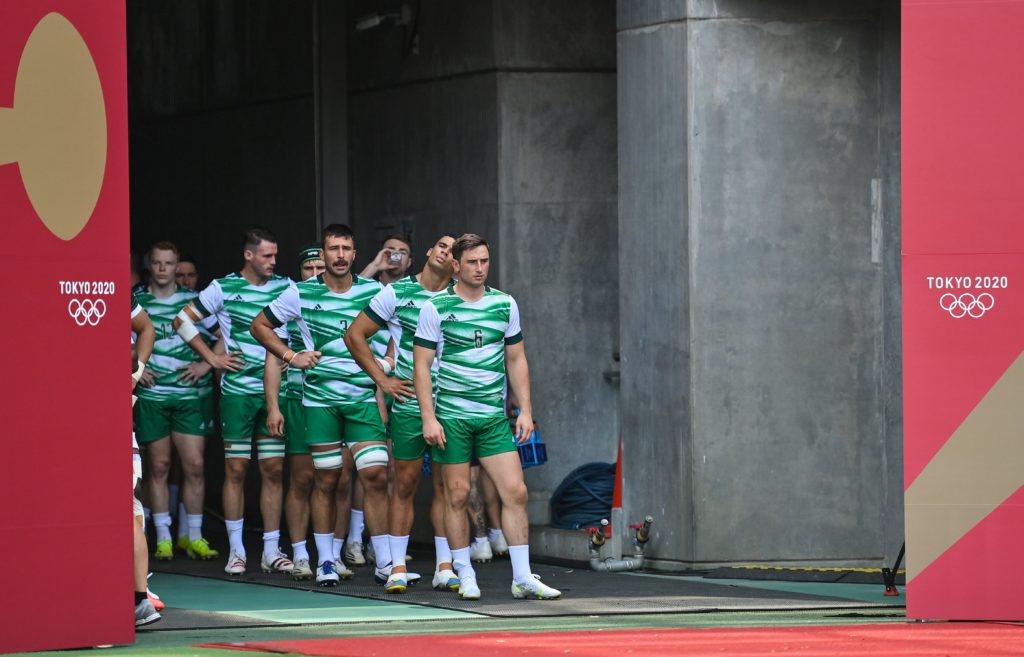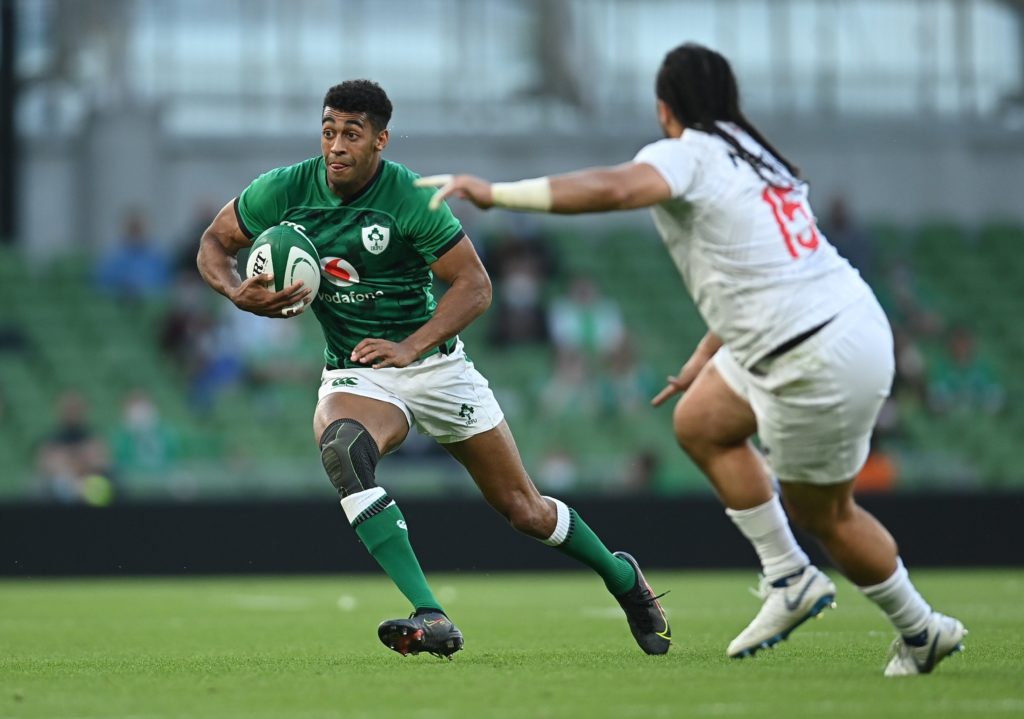As Shane Daly and Nick Timoney sat side by side in Ireland’s Carton House camp earlier this summer, they reflected on their respective journeys to a green jersey.
On the day in question, Timoney was on the cusp of making a try-scoring debut against the USA in the Aviva Stadium. It was a proud moment for a man who once seemed predestined for such a stage when captaining a Blackrock College side who contained the likes of Joey Carbery and Jeremy Loughman, but who had endured the bitter blow of being released by the Leinster under-age set-up after just one year. Worse than that, as recently as last December he found himself relegated to togging out for Ulster ‘A’ while the first string welcomed soon-to-be European champions Toulouse to Belfast.
While Daly’s route to his own international debut earlier this season had not involved quite the same level of perseverance against seemingly dwindling odds, the Munster man had still been forced to patiently bide his time while former Under-20s team-mates Jacob Stockdale, James Ryan and Andrew Porter were playing sizeable parts in a Six Nations Grand Slam before he’d even made a first appearance at Thomond Park.
What both have in common is spending some of their early professional development in the Sevens code.
Having just watched some of their former team-mates achieve their holy grail of Olympic qualification for Tokyo, the pair laughed as they agreed they’d not be allowed near the team nowadays.

To say Ireland had no history in Sevens prior to 2015 would be disingenuous. They were invited to the odd party, just not the better ones and they were always home in time for the news anyway.
A decade before their major breakthrough of making it on to the lucrative World Series circuit two years ago, a rag-tag bunch of those on the fringes of the provinces that included the likes of Felix Jones, Darren Cave and Chris Henry secured qualification for the 2009 World Cup, a fifth time at the tournament in succession. But the programme had fallen into a state of disrepair before, dilapidated and neglected, it was abandoned altogether.
In a far from typical Irish fashion, the wake was short and there was little mourning.
As such, when the Australian David Nucifora became the IRFU’s High Performance Director in the summer of 2014, and a few months later announced that the side was to be reborn and used as a development tool, it was a move that prompted questions of motive and, more pertinently, cost.
In a far from typical Irish fashion, the wake was short and there was little mourning.
Given Ireland’s unwritten national selection policy limits them to only home-based players, there had essentially been a hard cap of 92 available places each week for eligible professional players to see game-time. Long gone were the days where London Irish could be considered something of a ‘Fifth Province’ and there were a smattering of other Irish stars plying their trade throughout the Gallagher Premiership.
With those employed abroad now essentially lost to the Irish system, the need to find competitive minutes for those on a different developmental curve to the James Ryans and Jordan Larmours of the world was readily apparent to Nucifora. Few, at that time, truly believed the newly-minted Olympic sport could help fill the void.
The new boss hardly trumpeted the relaunch either, perhaps opting for an approach of undersell/over-deliver when warning of a “crawl before we walk-type scenario” that “will be done quite cheaply, to be honest”.
Nor did the initial assignment – a trip to Zenica in Bosnia & Herzegovina for Rugby Europe Division C – send too many sports editors in a scramble for copy.
But with Nucifora’s compatriot, Anthony Eddy, brought on board as Sevens director in late 2014, Ireland stormed the tournament the next summer, starting the long six-year journey that has taken them to Tokyo.

The scenes of genuine emotion as Ireland secured their spot at the Games thanks to a second-half comeback over France in the final of the qualification repechage in June was a genuinely heart-warming tale authored by a group possessing divergent histories.
From Greg O’Shea, arguably Ireland’s most famous rugby player thanks to his status as the 2019 winner of ITV’s reality show ‘Love Island’, to charismatic superstar-in-waiting Jordan Conroy, the personalities of those involved have always felt more to the fore than when dealing with their XVs brethren, while the fact that it was Harry McNulty, one of the originals who scored in the first game back in 2015, sealing the win with a late try, gave the incredible story a pleasing symmetry.
That Ireland are presently at the Olympics, and that even that very first squad featured a player seemingly drifting from the professional ranks who is now excelling, offers compelling evidence of the success of this venture.
Looking back at that first teamsheet from Zenica though, perhaps the most pleasing aspect for the IRFU given their original intentions was not the presence of McNulty and fellow ever-presents Ian Fitzpatrick, Foster Horan, Terry Kennedy and Mark Roche, but some of those whose time was considerably more brief.
Their captain that day was Tom Daly, the same Tom Daly who has been so impressive for Connacht of late and was called up by Andy Farrell for Ireland’s summer series.
That Ireland are presently at the Olympics, and that even that very first squad featured a player seemingly drifting from the professional ranks who is now excelling, offers compelling evidence of the success of this venture, a feat of somehow managing to keep one train on two different tracks and still reach the desired destinations.
Despite the scepticism, the idea of Sevens as a development tool for the XVs game has proven far from speculative. The two Dalys, Tom and Shane, and Timoney are not isolated cases.
Adam Byrne, capped by Ireland in 2017 before an injury-plagued run at Leinster, and recent Pro14 Dream Team inclusion Alex Wootton were in that maiden squad too, while Hugo Keenan, Robert Baloucoune and Will Connors all wore green in the short-sided code before graduating and starring for the XVs side.
For this new pathway to have a posterboy or two at this stage would likely have been considered a success but the sheer number of those who have benefited and already went on to senior XVs caps is a stark exceeding of expectations.
It was impossible to see Baloucoune – the emerging Ulster star who has scored 15 tries in his first 27 provincial starts – streak home from halfway on debut against the USA and wonder if a few years prior he may have been allowed to slip through the net.
As recently as the spring of 2017, the Fermanagh-born winger was playing for his local club Enniskillen RFC in what amounted to the sixth tier of amateur rugby in Ireland. Four years later and the returning crowd in the Aviva Stadium buzzed with anticipation at his every touch.

“I’d say when I was with Enniskillen I didn’t think I was going to be involved with anything (professionally), to be honest,” said the man so relaxed he ha’s been nicknamed ‘The Cat’ by team-mates as he went through the usual rite of passage media session alongside his first cap.
“Whenever I was younger and I was playing in school, I had been approached by Ulster then but had a few injuries, got dropped, and wasn’t involved with Sevens or anything.
“But then (former Ireland winger) James Topping, who was the manager with Ireland Sevens, he would have been my coach at Under-19s with Ulster so I knew him, and he called me whenever I was holiday with a few mates and asked if I wanted to train with Ulster, just over the summer for a couple of weeks.
“We ended up playing an in-house game and afterwards I was then given an academy/Sevens contract, but I didn’t really train with the academy, I was pretty much full-time Sevens, so that’s what got me back in the system.
If I’d been playing XVs I’d have been stuck on the wing and I wouldn’t have got the same ball or had to make as many tackles or been involved in the game as much. Sevens really drove that. You can’t hide at all.
Robert Baloucoune
“I went into Sevens really before the Academy or the usual routes. (When) I was playing junior rugby for Enniskillen, obviously other players were playing a different standard of rugby and it (was Sevens that) allowed me to catch up and put my skills to the test.
“If I’d been playing XVs I’d have been stuck on the wing and I wouldn’t have got the same ball or had to make as many tackles or been involved in the game as much. Sevens really drove that. You can’t hide at all.
“For me, it’s quite a while back but I found myself realising that you have to work hard in Sevens and if you don’t work hard, you get caught out. At the start of it I’d say I wasn’t really fit enough for the intensity of the game and I found myself caught out a few times.
“But I think once you get used to the training and the intensity of the game, I was able to settle in. You find yourself scurrying across half the pitch to make a tackle or running back 50metres after a break and it really tests you.
“It was kind of a big step from Enniskillen, I wasn’t really sure if I was capable of doing it but once I got involved in training all the lads were great and I was able to settle in.”
Timoney, one of Ulster’s best players in this calendar year as they look to fill the void left by Marcell Coetzee’s departure, tells a similar tale of swimming when the only other option was to sink.

“It’s just a game where your weaknesses get exposed,” says the 25-year-old who nearly joined Pau in France before the opportunity to stay in Ireland arose.
“But if your one-on-one tackling is not good and you’re making one-on-one tackles with guys with amazing footwork and great speed, and they’ve got a tiny amount of space either side of you, you’ve no choice but to get better at your one-on-one tackling. I played Sevens and I was used to defending 112kg lads with great footwork in 20m of space.
“So any weakness you had in your game was exposed and for me there were things where I wasn’t used to throwing 15-metre passes off both hands in games.
You have to be fast enough as well. If someone is going to run in behind you, you either catch them or you don’t, and if you don’t they’re going to score.
Nick Timoney
“In XVs, as a forward, you can get away with not passing at all sometimes if you don’t want to whereas that’s not an option in Sevens, you have to pass and every pass needs to be about 10m or 15m.
“You have to be fast enough as well. If someone is going to run in behind you, you either catch them or you don’t, and if you don’t they’re going to score. You get used to it and you get better at all these things.”
Such success stories have not been without controversies.
Even before Covid-19 wreaked unprecedented havoc on finances, rugby resources were finite, especially away from the men’s professional XVs game that drives the vast majority of revenues.
The funneling of even relatively limited euros towards Sevens for developmental purposes is credited with engendering at least some of the disconnect felt between the IRFU and Ireland’s senior clubs, with the apparent diminishing relevance of the All-Ireland League to the provincial set-ups a continuing sore point.
Similarly, the decision to withdraw three key players from the 2017 Six Nations to prepare for the World Sevens Series, at a time when the women’s XV were making a belated thrust towards the public consciousness thanks to a Grand Slam, a further Six Nations title and a first-ever World Cup semi-final in the years between 2013-15, was met with general bemusement. The dismal home World Cup that followed was seen by many as nothing more than chickens coming home to roost, its legacy living on with Ireland’s qualification for the tournament in New Zealand next year still far from assured.
Regardless, participation in Tokyo is being viewed as the beginning, not the end, of the journey.

Already the goal of getting both the men’s and women’s teams to the Paris ’24 and Los Angeles ’28 Games, as well as their Under-18 counterparts to the Youth Olympics in Dakar during 2026, has been stated.
“The Ireland men’s Sevens team qualifying for the Olympics is a huge opportunity for us to be able to build a sustainable pathway for Sevens rugby in Ireland,” said Nucifora on the eve of the action that sees Ireland in a pool alongside South Africa, USA and Kenya getting underway. “The interest that the Olympics will bring gives us the opportunity to be able to grow the game of Sevens throughout the country.
Tokyo is on our mind right now but looking towards Paris, it is only a three-year turnaround and our ambition is to be there with both our men’s and women’s teams.
David Nucifora
“We’re focused on leaving a legacy as a result of the team’s qualification for Tokyo.
“We want to build a Participation Pathway for the game of Sevens through the schools and clubs to open up the sport to non-traditional areas and players. It is a true pathway for a rugby player and we’re striving to get the development part of it right and truly open up the game for all and make it as accessible as possible. We’ll see the growth of the game in Ireland off the back of that.
“Tokyo is on our mind right now but looking towards Paris, it is only a three-year turnaround and our ambition is to be there with both our men’s and women’s teams.
“We’re hugely excited for what’s ahead and know we can achieve all of these goals and ambitions in the years ahead.”
Entering the last year of his contract as one of the game’s most influential figures, Nucifora’s future in Ireland remains the subject of some conjecture. One of his very first steps in the job, however, seems as if it’s here to stay.
More stories from the XV
If you’ve enjoyed this article, please share it with friends or on social media. We rely solely on new subscribers to fund high-quality journalism and appreciate you sharing this so we can continue to grow, produce more quality content and support our writers.



Comments
Join free and tell us what you really think!
Sign up for free